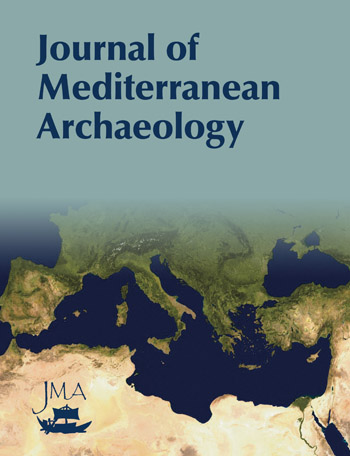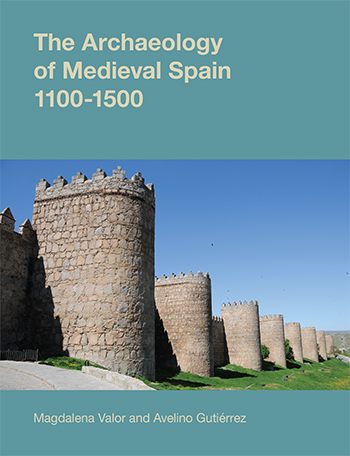The Archaeology of Medieval Sicily
Cultures, Social Structures, Economies
Alessandra Molinari [+–]
University of Rome Tor Vergata (Italy)
View Website
Alessandra Molinari is (since 2001) Professor of Medieval Archaeology at the University of Rome Tor Vergata (Italy), with PhD supervisions also with the University of Siena. Her studies have focused mainly on the city of Rome in the Middle Ages, medieval Tuscany (Arezzo and its territory), but especially Sicily from the Byzantine to the Swabian period. She has directed excavations and other fieldwork at Segesta (Trapani) and its territory, Mazara del Vallo, the old Cathedral of Arezzo and the castle of Montecchio Vesponi (Cortona). Her current research projects include construction of the digital Forma Urbis of medieval Rome and, above all, the study of the socio-economic transformations of Sicily from the Byzantine to Islamic age, in collaboration with the University of York with a multidisciplinary approach. Her books include: Segesta II. Il castello e la moschea (scavi 1989-95) (Palermo, 1997); Arezzo: il Colle del Pionta. Fonti e materiali dall’età classica all’età moderna, (Arezzo, 2005), with C. Tristano.
She is joint editor (with A. Nef) of La Sicile à l’Époque islamique. Questions de méthodes et renouvellement récent des problématiques, MEFRM, 116, 2004, 1, and editor of the collected papers on ‘Mondi rurali d’Italia: insediamenti, struttura sociale, economia. Secoli X-XIII’, int journal Archeologia Medievale, XXXVII, 2010.
Broadly, this proposed volume will seek to reconstruct, primarily using archaeological sources (buried, built, material cultural), a social and economic history of Sicily across seven centuries; key components within this reconstruction will be institutions, culture, religions, exchange systems, production and consumption patterns, coinage, social structures, urban and rural housing, etc. There will be some comparative assessment, drawing notably on other Italian zones (chiefly south Italian), Visigothic and Islamic Spain, and Byzantine and Arab North Africa. One must emphasise that currently no extended synthesis of this type is available for Sicily either in Italian or in English; this volume would thus make a notable statement in drawing on, especially, the archaeological record to tackle to island’s significant and challenging multicultural history.
A particular aim is to bring to the fore how research on material sources, especially in the last two decades, had helped to substantially modify the perception of the economic and cultural role played by Sicily in the Mediterranean space, which has too often been viewed as marginal. It will also be valuable to demonstrate the constant tension which archaeology is able to highlight between the changes of power/authority in the island and the forms of social, cultural and religious ‘resistance’ of local/indigenous communities. This tension and the growing role of archaeology are best explored across the wide timespan of the 6th to 13th centuries A.D., from Byzantine to Swabian domination.
In order to illustrate all this a wide spectrum of material sources will be deployed: firstly, we will explore the types and distribution of the diverse kinds of settlement – from city to open villages, defended villages, military fortresses, scattered settlement (this weakly understood), religious foci, etc. Thus we will draw upon evidence such as the typologies of houses, material culture (with ceramics prominent in discussion), funerary practices, religious buildings, and communications. There will also be reference to monetary circulation and to specific object types like Byzantine- and Arab-period lead seals (e.g. to pay the jizya or personal tax), glass jetons, glassware, etc.
Unfortunately, currently research on the agricultural techniques, resources, palaeodemographics, etc. is limited, but mention can be made to certain themes, such as the claimed islamic agricultural revolution and the physical visibility/legibility of this on the island of Sicily. Interestingly, however, the world of the farmers/peasants is that for which a more critical mass of data is available, most notably regarding actual zones and modes of settlement. Accordingly this – landscape and settlement – will form one of the core themes of the proposed book.
Table of Contents
Introduction
Introduction [+–]
Broadly, this proposed volume will seek to reconstruct, primarily using archaeological sources (buried, built, material cultural), a social and economic history of Sicily across seven centuries; key components within this reconstruction will be institutions, culture, religions, exchange systems, production and consumption patterns, coinage, social structures, urban and rural housing, etc. There will be some comparative assessment, drawing notably on other Italian zones (chiefly south Italian), Visigothic and Islamic Spain, and Byzantine and Arab North Africa. One must emphasise that currently no extended synthesis of this type is available for Sicily either in Italian or in English; this volume would thus make a notable statement in drawing on, especially, the archaeological record to tackle to island’s significant and challenging multicultural history. A particular aim is to bring to the fore how research on material sources, especially in the last two decades, had helped to substantially modify the perception of the economic and cultural role played by Sicily in the Mediterranean space, which has too often been viewed as marginal. It will also be valuable to demonstrate the constant tension which archaeology is able to highlight between the changes of power/authority in the island and the forms of social, cultural and religious ‘resistance’ of local/indigenous communities. This tension and the growing role of archaeology are best explored across the wide timespan of the 6th to 13th centuries A.D., from Byzantine to Swabian domination. In order to illustrate all this a wide spectrum of material sources will be deployed: firstly, we will explore the types and distribution of the diverse kinds of settlement – from city to open villages, defended villages, military fortresses, scattered settlement (this weakly understood), religious foci, etc. Thus we will draw upon evidence such as the typologies of houses, material culture (with ceramics prominent in discussion), funerary practices, religious buildings, and communications. There will also be reference to monetary circulation and to specific object types like Byzantine- and Arab-period lead seals (e.g. to pay the jizya or personal tax), glass jetons, glassware, etc. Unfortunately, currently research on the agricultural techniques, resources, palaeodemographics, etc. is limited, but mention can be made to certain themes, such as the claimed islamic agricultural revolution and the physical visibility/legibility of this on the island of Sicily. Interestingly, however, the world of the farmers/peasants is that for which a more critical mass of data is available, most notably regarding actual zones and modes of settlement. Accordingly this – landscape and settlement – will form one of the core themes of the proposed book.
Chapter 1
The late antique inheritance: a wealthy or damaged province in the 6th century? Recent research has identified in particular the prosperity of the rural landscapes of the island in this period and the strong political, religious and trade links with Constantinople and Rome. A Byzantine military presence? Urban roles and Church forms.
Chapter 2
The Islamicisation of Sicily is a complex and much debated phenomenon, with issues such as the formation of the Arab state, religious change, the linguistic Arabisation, the mutation of family structures, of material culture, agricultural practice and landowning, architectural and artistic fusions, etc. Prominent now is the central role of Medina Balarm (Palermo) in the development of Arab Sicily.
Chapter 3
The Norman period marks a progressive transformation of Sicilian society. The new monarchy, which on certain levels maintained or developed many elements of the Arab government of the island, was not able (especially in the second half of the 12th century) to guarantee a happy balance between the new Latin-Christian immigrants and the ‘autochthonous’ natives and farmers (these of course a mix of diverse cultural roots). But this was a period also of new building and urban redesign, marked by castles, cathedrals and monasteries.
Chapter 4
Sicily under the Swabians (late 12th to first half of the 13th century). An Archaeology of Genocide? [+–]
Increased understanding of the documentary and archaeological sources enable scholars to trace now a phase of dramatic fracture in the settlement and cultural history of Sicily.
Chapter 5
Synthesis of key issues and debates. Issues of population change; landscapes of power; rural economics; Sicily and trade from Byzantine to medieval. How far a distinctive archaeology. Gaps and research directions.







